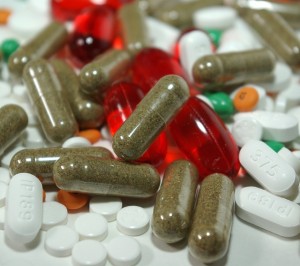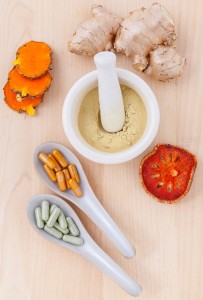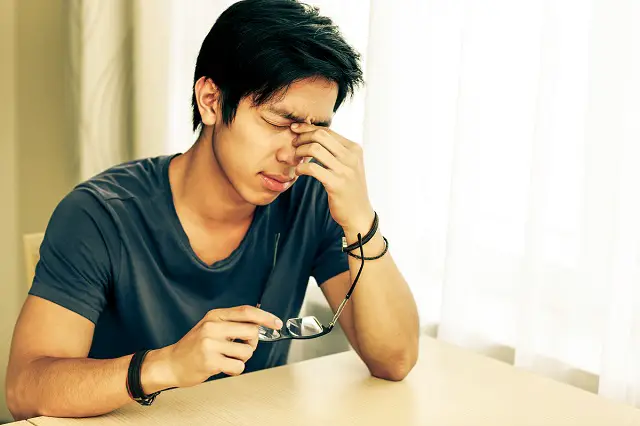What Is Depression And How Does It Effect People?
Depression is a mental disorder that causes sadness, lack of motivation, low self esteem, and a lack of interest in activities that the sufferer used to find enjoyable.(1)
It is often referred to by doctors and suffers as major depression or clinical depression. Clinical depression is different than just feeling sad after a bad day or after somebody close to you has passed away; everybody feels sad sometimes, but this doesn’t mean that they are depressed.
Depression lasts a long time – two weeks or more – is not caused by a specific life event, and is severe enough to affect the sufferer’s general life and well-being.
What Causes Depression?
Nobody is exactly sure what causes depression. The current hypothesis is that some people have traits that make them more susceptible to becoming depressed, and then stressful life events activate the depression. Some of these traits may be inheritable – depression can run in families. (2)
A chemical imbalance in the brain seems to be involved; antidepressants fix this imbalance.
Treatment Options
Treatment of depression can take a variety of forms, and things that work for one person may not work for another.
Psychotherapy – generally known as therapy or counseling – is a common form of treatment, and it can be combined with other treatments such as medication as well.
Cognitive behavioral therapy (CBT) is one of the most common forms of psychotherapy, and many find success with this method. CBT involves identifying incorrect or maladaptive thought processes (“I’m a screw-up and everybody hates me,”) and replacing them with more positive and realistic thought processes (“I messed up this time on this thing, but there are a lot of other things that I do well. Nobody hates me for messing up this one thing.)
Psychoanalysis, interpersonal therapy, and family therapy are other types of therapy used in treating depression.
 Antidepressants are another common form of treatment. Antidepressants are often prescribed along with therapy, as combining the two treatments has shown to be more effective than just using one or the other.
Antidepressants are another common form of treatment. Antidepressants are often prescribed along with therapy, as combining the two treatments has shown to be more effective than just using one or the other.
There are different types of antidepressants. The most common are selective serotonin reuptake inhibitors (SSRIs). They have the least severe side effects, and there are a variety of drugs in this class to switch to if the first one prescribed does not work.
Another type of antidepressant is bupropion. Bupropion can be prescribed on its own, or along with an SSRI or other type of antidepressant as it sometimes helps to improve the effectiveness and counteract side effects of SSRIs.
Monoamine oxidase inhibitors (MAOIs) are an older type of antidepressant. They are prescribed less often than the other types now because they have more dangerous side effects, however, they are still used when other types of antidepressants have not worked, or when the prescriber feels that the benefits outweigh the risks for the patient.
Those that take any type of antidepressants must be mindful of side-effects. One very concerning side effect is increased risk of suicide for children, adolescents, and young adults taking antidepressants.(3)
Electroconvulsive therapy (ECT) is also used to treat depression. ECT involves sending pulses of electricity through the brain. It is most often used in very severe cases of depression, and in these severe cases, it acts more quickly at treating symptoms than therapy or antidepressants.
However, it has some side effects including short and long-term memory loss, and these side effects, combined with concerns about safety and efficacy make ECT a controversial treatment.(4)
Natural Treatments
 There are also natural options for treating depression.
There are also natural options for treating depression.
Fish oil supplements – specifically those containing eicosapentaenoic acid (EPA) and docosahexaenoic acid (DHA) have been shown in some studies to be helpful in treating depression.(5)(6)
This is a promising area, but more research has to be done.
Light therapy (also know as phototherapy or heliotherapy) has also shown to be effective in treating depression in some cases.(7)
Light therapy involves exposing the patient to full sunlight or light from a light box. Light therapy has proven to alleviate symptoms of those suffering from seasonal affective disorder (SAD), which is a mood disorder where patients exhibit depressive symptoms during only one season.(8)
Studies have begun to show positive results in patients with clinical depression as well.(9)(10)
Exercise is also helpful in treating depression – it has shown to be just as effective as antidepressants or psychotherapy in many people.(11)
Researches and references
(1) https://www.nimh.nih.gov/health/topics/depression/index.shtml
(2) http://www.health.harvard.edu/mind-and-mood/what-causes-depression
(3) http://www.nps.org.au/conditions/mental-health-conditions/mood-disorders/depression/for-individuals/medicines-for-depression-antidepressants/managing-side-effects-of-antidepressants/antidepressants-and-suicide-risk
(4) http://www.healthtalk.org/peoples-experiences/mental-health/electroconvulsive-treatment/side-effects-having-ect
(5) http://www.mayoclinic.org/diseases-conditions/depression/expert-answers/fish-oil-supplements/faq-20058143
(6) http://www.ncbi.nlm.nih.gov/pmc/articles/PMC2186366/
(7) http://www.ijastnet.com/journals/Vol_2_No_6_June_2012/16.pdf
(8) Biol Psychiatry. 2001 Aug 1;50(3):205-16. Dawn simulation and bright light in the treatment of SAD: a controlled study.Avery DH, Eder DN, Bolte MA, Hellekson CJ, Dunner DL, Vitiello MV, Prinz PN.
Department of Psychiatry and Behavioral Sciences, University of Washington School of Medicine, Harborview Medical Center, Seattle, Washington 98104-2499, USA.
(9) http://archpsyc.jamanetwork.com/article.aspx?articleid=211002
(10) http://www.cet.org/wp-content/uploads/2014/06/Even-2008-JAD.pdf
(11) http://www.ncbi.nlm.nih.gov/pmc/articles/PMC474733/
Leave Feedback: Was this article helpful?

